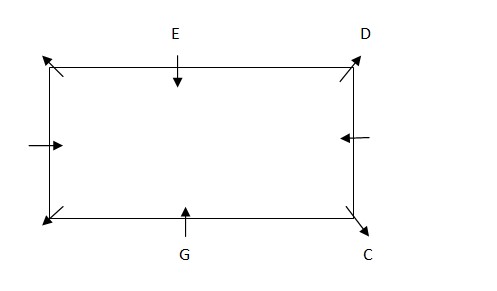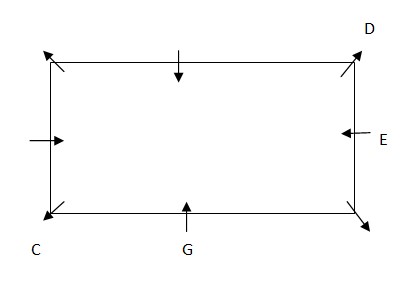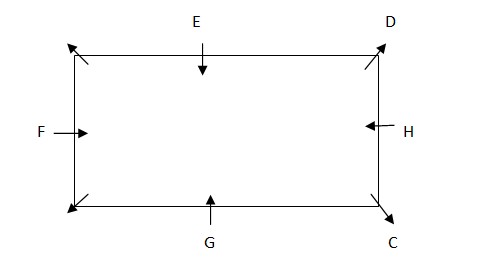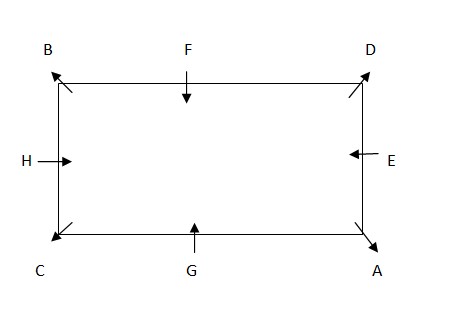Question
A is sitting at what position in respect of
H? Study the following information carefully to answer these questions carefully. A, B, C, D, E, F, G and H are sitting around a square table in such a way that four of them sit at four corner of the square while four sit in the middle of each of the four sides. The ones who sit at the four corners face outside while those who sit in the middle of the sides face the centre of the table. D sits third to the right of G. G faces the centre. E sits third to the left of C. C does not sit in the middle of the sides. Only one person sits between E and F. F is not an immediate neighbour of C. H faces the centre. A, is not an immediate neighbour of F.Solution
We have provided with the information, D sits third to the right of G. G faces the centre . E sits third to the left of C. C does not sit in the middle of the sides. C can sit at two places either on the immediate left of G or at the immediate right of G. Case. 1 – When C sits on the immediate right of G  Case.2 – When C sits on the immediate left of G
Case.2 – When C sits on the immediate left of G  Only one person sits between E and F. F is not an immediate neighbour of C. Case 1- F will sit on the right of E. H faces the centre. A, is not an immediate neighbour of F.
Only one person sits between E and F. F is not an immediate neighbour of C. Case 1- F will sit on the right of E. H faces the centre. A, is not an immediate neighbour of F.  In this case A will become an immediate neighbour of F which will make this case wrong. We will continue with case 2. Case 2- F will sit on the right of E. Only place left for B is on immediate right of F. Thus the final arrangement is;
In this case A will become an immediate neighbour of F which will make this case wrong. We will continue with case 2. Case 2- F will sit on the right of E. Only place left for B is on immediate right of F. Thus the final arrangement is; 
Read the given statements and conclusions carefully and decide which of the conclusions logically follow(s) from the statements.
Statements:
In the following question, a relationship between different elements is shown in the statement followed by two conclusions (I) and (II). Assuming the st...
Statement:
Some Trains are bus.
Only few buses are bike.
Only cycles are bike.
No cycle is plane.
Conclusion:
Read the statement, followed by two conclusions. Read them carefully and select thecorrect option.
Statement: If you are depressed, you are livin...
For a trophy, 16 teams participate, numbered 1-16 according to their rankings. In the qualifier matches, the teams face their immediate next lower ranke...
Read the statements and identify which of the conclusions logically follow/s from the given statement.
Statement:
Parents are ready to p...
Read the given statements and conclusions carefully. Assuming that the information given in the statements is true, even if it appears to be at varianc...
3 In the following question below are given some statements followed by some conclusions based on those statements. Taking the given statements to be t...
Statement:
No one is two.
A few two are three.
Only one is four.
Conclusion:
1. All two being three is a possibilit...
Read the given statements and the following conclusions carefully and select which of the conclusions logically follow(s) from the statements.
S...


